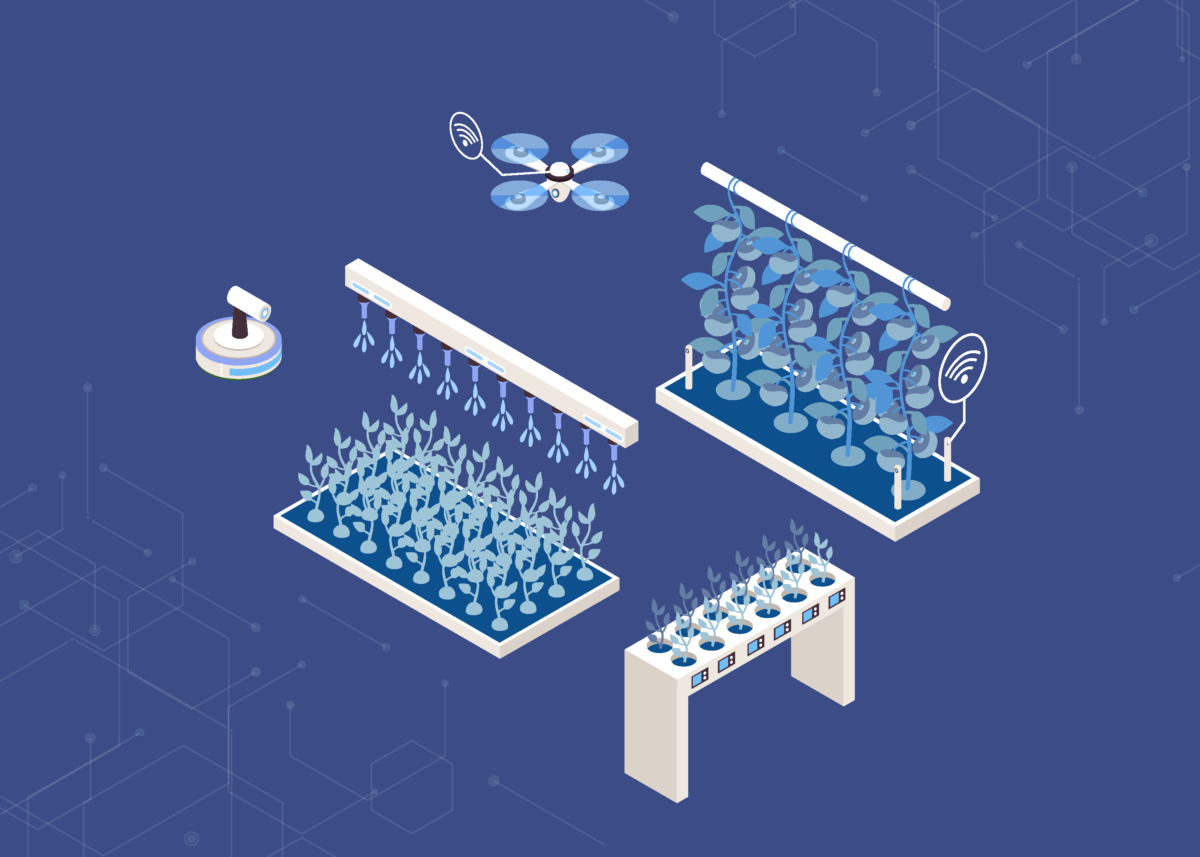7 Ways AI contributes to the Agriculture Industry

Agriculture is one of the oldest occupations in the world. From the times of Harappan and Mesopotamian civilizations, agriculture has been fulfilling our need for sustenance. As we advanced as a civilization, so did the different methods of food production and distribution. Agriculture accounts for 4% of the global GDP and in some developing countries, it can account for more than 25% of GDP. This agricultural industry is spread all across the world generating $2.4 trillion for the global economy.
The 21st century demands large-scale food production. This is where AI plays a major role in the field of agriculture crop yielding, soil examination, metrics harvesting, managing metrics of crop health, organizing data, and irrigation. It is without a doubt that AI is helping farmers increase their ROI.
Let’s dig in to understand the impact of AI on agriculture.
1. Image recognition
Image recognition is the basic step for Machine Learning. The image and pattern recognition helps in gaining visual depth. It helps to trace different crops as well as the fertilizers and pesticides used. It is used in UVs, surveillance, and geolocalization. Image recognition, in its essence, enables farmers to detect crop health, identify vitamin deficiencies and assess overall crop quality. This technology has proven to be more accurate and time-efficient than traditional agricultural approaches. Image recognition is the most crucial step in AI and is used in almost every AI model.
2. Chatbot assistance
Speech is the most common way of communication that requires little reading or learning. Audio-based interactions are the preferred—and in some cases, the only usable interactions. Also, unlike Graphic User Interfaces (GUIs), chatbots provide direct information access without the need to explore complex information channels. Chatbots are trained with Natural Language Processing and help understand the national and regional languages of farmers. They provide personalized assistance or connect the farmer with a skilled person. Chatbots are equipped with all services, including voice-over, digital transactions, among others.
3. Weed Control
Controlling the growth of weeds and saving crops from getting destroyed is the biggest concern for farmers the world over. A weed infection is contagious and spreads to crops planted in close vicinity to each other. Thus, regulating this infection is one of the biggest challenges for farmers. Artificial Intelligence-led automation and robotics help farmers find effective ways to deal with this problem. AI technology allows visual monitoring of crops. This helps target weed growth areas precisely while spraying away from the pesticide. This allows farmers to limit the usage of pesticides, while simultaneously removing weeds.
4. Soil examining
Soil is the foundation of agriculture. Repeated cultivation degrades the quality of the land and leaves it barren and uncultivable. Many misinformed farmers don’t pay heed to this and continue plowing the same field continuously. This affects both the land and the crops. AI-led technology examines the soil and identifies pain points, gives customized solutions, and analyzes the progress of the soil. It also uses image recognition to trace out soil patterns., The advanced technology works with multiple algorithms and provides results with 95% accuracy.
5. Irrigation
Water is the basic requirement for irrigation. The current methods of irrigation waste a lot of water. The rapid growth of civilization cannot endure this wastage. Improved irrigation timing and efficiency is one of the most commonly mentioned applications. While soil moisture data (from sensors or models) has long been utilized as a scheduling tool, AI now offers the possibility of machine learning of how soil moisture responds to irrigation events in scenarios involving various crops, soils, weather circumstances, and so on. Similarly, AI might be used to learn the relationships between accessible weather, crop, and soil condition data and a trained agronomist’s irrigation recommendations, therefore automating the scheduling process’s repetitious components.
6. Crop analysis via Drones
Drones are readily being invested in by multiple industries. AI-led drones are used on multiple fronts in the agriculture industry, from crop health, irrigation, and monitoring to wildlife and disaster monitoring. The drones help in aiming towards distant places on the cropland, where the naked eye cannot reach. Farmers can also deploy systems at home and keep a check on their farms. Crop spraying is an essential practice in all farmlands and drones have made this process seamless. The required amount is sprayed with no wastage. Thus, revenue and health both are taken care of!
7. Weather prediction
Weather is an important aspect of agriculture. Unprecedented weather conditions may lead to a lot of financial loss. Thus, planned sowing seasons are recommended. AI has come a long way and provides highly accurate weather predictions. The farmer can now be aware of the speeds of the wind, humidity, rainfall, etc. Thus, it helps them to plan the crop season keeping the weather conditions in mind.
These automated processes have changed the agricultural scene entirely. Data science, data monitoring, and data processing are now all done in the least amount of time with maximum profitability and minimum possible time with AI-led technology.
At Automaton AI, our vision is to create an ecosystem for Agri – AI industry to shape and speed up agricultural reforms through innovative AI models. We have set up an Agri AI consortium that aims towards creating a movement in the field of AI in agriculture and help the sector grow by helping farmers realize the application of AI in agricultural technologies. We are collaborating with Farm DSS, HUG Agro Biotech, and Rahuri Krishi Vidyapeeth to drive optimization and innovation in the Agri AI value chain.
